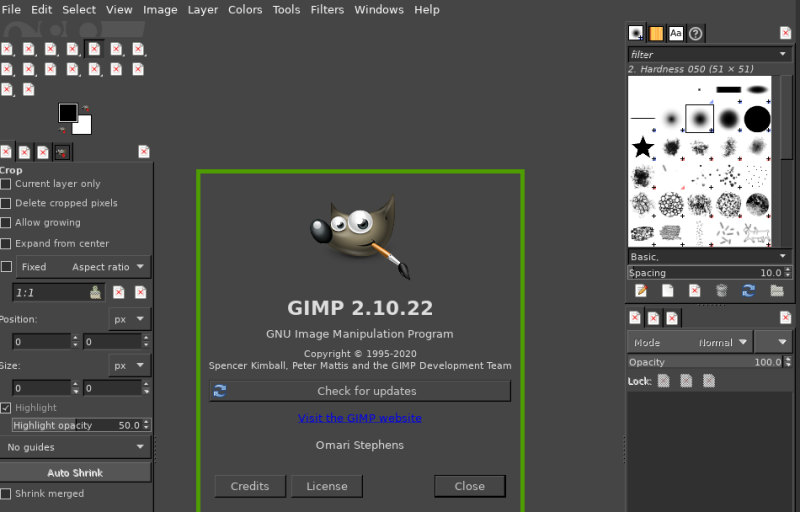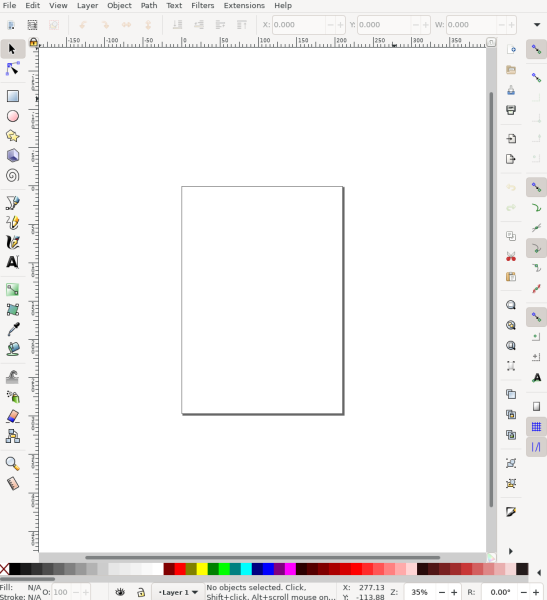That is possible? Yes it is, in reality many GUI applications packed in docker and run through browser or passing to xorg. Usually there is two kind of docker images that trying run GUI applications, first it the one that emulate desktop either using VNC and other means, then the second is by passing the application to xorg directly. In this write we will explain the second type, passing the GUI to xorg.
First of all, let build two docker images with gui application, first is gimp and second is inkscape.
-
Dockerfile.gimp
FROM debian:bullseye-slim RUN apt update && apt-get install -y --no-install-recommends \ gimp \ --no-install-recommends \ && rm -rf /var/lib/apt/lists/* ENTRYPOINT [ "gimp"]- Build image
$ docker build . -t gimp:local . -f Dockerfile.gimp
- Build image
-
Dockerfile.inkscape
FROM debian:bullseye-slim RUN apt update && apt-get install -y --no-install-recommends \ inkscape \ --no-install-recommends \ && rm -rf /var/lib/apt/lists/* ENTRYPOINT [ "inkscape"]- Build the image
$ docker build . -t inkscape:local . -f Dockerfile.inkscape
- Build the image
Now we got two images, inkscape:local and gimp:local, then we just need to run them via docker run
docker run --rm --name gimp-local \
-v /etc/localtime:/etc/localtime:ro \
-v /tmp/.X11-unix:/tmp/.X11-unix \
-e DISPLAY=$DISPLAY \
gimp:localTwo parameters -v /tmp/.X11-unix:/tmp/.X11-unix -e DISPLAY=$DISPLAY must exist.
Then we will see gimp startup display loading, and load the gimp.

Now we run the inkscape, using the same command but by replace gimp to inkscape
docker run --rm --name inkscape-local \
-v /etc/localtime:/etc/localtime:ro \
-v /tmp/.X11-unix:/tmp/.X11-unix \
-e DISPLAY=$DISPLAY \
inkscape:localSame condition as gimp, the inkscape GUI will show shortly.

This is one of caveat using GUI as docker, inconsistent theming, as every applications had their own preset configuration and preferences, the GUI interface will different each other when native installation will read per user configuration, usually stored at ~/.config path. The theme may bad looking, missing fonts, missing icons
Second caveat is non persistent, docker image don't have the path that will store user settings or data, the path will created and deleted after application exited. Everytime application started it will use application preset settings rather that user defined one. But this also become advantage for privacy, as application created and destroyed on demand, then no data saved such as history, custom settings, etc. So depends on personal use-case this may useful or annoying for some reason.
These two is directly noticed after using gimp and inkscape few days, performance wise nothing difference from native install, there are maybe some other caveats that i didn't noticed so you may find some other caveats when using other applications.
We already had the docker run command, now its time to convert in to compose type, as we dont want to typing docker run everytime, using bashrc ALIAS also one way out.
Compose
#docker run --rm --name gimp-local \
# -v /etc/localtime:/etc/localtime:ro \
# -v /tmp/.X11-unix:/tmp/.X11-unix \
# -e DISPLAY=$DISPLAY \
# gimp:local
version: "3.8"
services:
gimp:
image: gimp:local
volumes:
- /etc/localtime:/etc/localtime:ro
- /tmp/.X11-unix:/tmp/.X11-unix
# Add path to your data, because container will not read host data,
# only the one we passed
- /some/path/to/your/data:/data
environment:
- DISPLAY=$DISPLAYHail privacy
sources:
